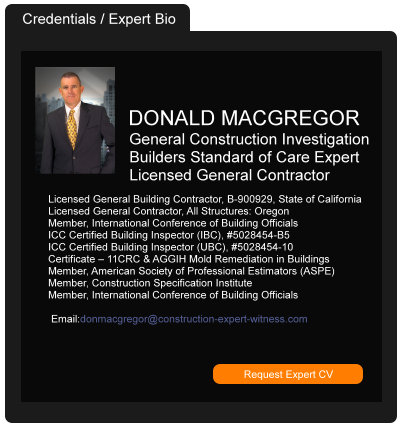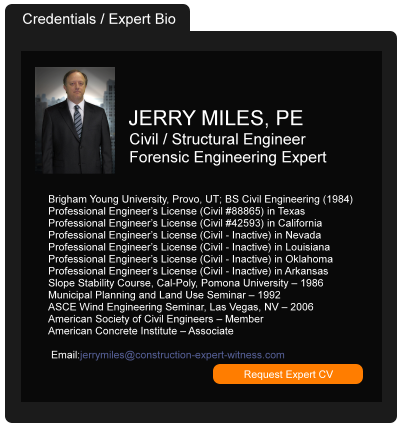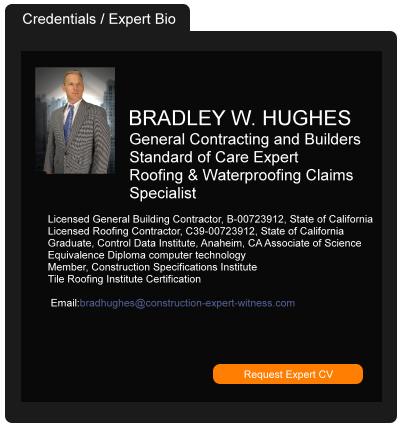Montana Supreme Court Tackles Decade-Old Coverage Dispute Concerning Asbestos Mineworker Claims
December 20, 2021 —
Patricia B. Santelle & Paul A. Briganti - White and WilliamsOn November 23, 2021, the Montana Supreme Court issued an almost unanimous decision in National Indemnity Company v. State of Montana, a ten-year-old coverage dispute arising from claims against the State of Montana alleging it had failed to warn of asbestos dust conditions at vermiculite mining and milling operations in and around Libby, Montana (the Libby Mine) run by W.R. Grace & Company and its predecessors. Affirming in part and reversing in part rulings by the trial court that culminated in a $98 million judgment against the State’s CGL insurer from 1973 to 1975, the court addressed issues including the duty to defend/estoppel, the number of occurrences, “trigger of coverage,” and, in a case of first impression, allocation under Montana law.
Whether the Insurer Breached the Duty to Defend Depended Upon the Timeframe
The court looked at whether (1) the insured provided sufficient information to bring the claims within the possibility of coverage under the subject policy and (2) the insurer gave “the necessary substance to” fulfilling its duty to defend at four points in the relevant timeframe:
- The insurer did not breach its duty at the time the State initially tendered the Libby Mine claims because the State defended the claims through its self-insurance program, hired its own counsel, managed the litigation, made its own defense decisions, and took the position with the insurer that the matter was “under control” and “nothing was left to be done[.]”
Reprinted courtesy of
Patricia B. Santelle, White and Williams and
Paul A. Briganti, White and Williams
Ms. Santelle may be contacted at santellep@whiteandwilliams.com
Mr. Briganti may be contacted at brigantip@whiteandwilliams.com
Read the court decisionRead the full story...Reprinted courtesy of
Immigrants' Legal Status Eyed Over Roles in New York Fake Injury Lawsuits
January 07, 2025 —
Richard Korman - Engineering News-RecordEdison Fernando Pesantez Ramon says that early on the morning of Sept. 29, 2021, while working on a building renovation project on 96th Street in Manhattan, he tripped and fell badly on a staircase.
Read the court decisionRead the full story...Reprinted courtesy of
Richard Korman, ENRMr. Korman may be contacted at
kormanr@enr.com
Additional Insured Secures Defense Under Subcontractor's Policy
October 14, 2013 —
Tred Eyerly — Insurance Law HawaiiThe court determined there were sufficient allegations in the underlying complaint and third party complaints to raise a duty to defend for the additional insured. Ill. Emcasco Ins. Co. v. Waukegan Steel Sales, 2013 Ill. App. LEXIS 624 (Ill. Ct. App. Sept. 13, 2013).
Waukegan was named as an additional insured under subcontractor I-MAXX Metalworks, Inc.'s policy with Emcasco. An employee of I-MAXX, John Walls, was injured on the job site and sued Waukegan. The complaint alleged Waukegan was negligent in failing to property manage, operate and maintain the premises.
I-MAXX had a policy with Emcasco which named Waukegan as an additional insured. The coverage was limited, however, to the additional insured's vicarious liability as a result of the insured's conduct.
Emcasco refused to defend Waukegan because the allegations of direct negligence against Waukegan were excluded by the vicariously liability provision.
Read the court decisionRead the full story...Reprinted courtesy of
Tred EyerlyTred Eyerly can be contacted at
te@hawaiilawyer.com
Dust Infiltration Due to Construction Defect Excluded from Policy
September 09, 2011 —
CDJ STAFFA summary judgment was affirmed in the case of Brown v. Farmers Group, by the California Court of Appeals. The Browns bought a new home in Oakley, California. At the time, they signed disclosure statement “acknowledging that the area around their home experienced gusty winds and would be in development for years to come, which might result in dust and airborne mold.”
The Browns found an unusual amount of dust in their home, which became worse when they ran their heating and air conditioning system. Shelia Brown was later diagnosed with chronic valley fever, which was attributed to airborne mold. The Browns contacted Farmers which investigated the house. Although the adjustor from Farmers said the Browns would be covered, Farmers denied the claim.
After the Browns moved out of the house, an inspector found that the HVAC line in the attic was disconnected, sending dust into the home. The Browns brought action against Mid-Century Insurance, which managed the policy, and Farmers. The identified the HVAC defect, window problems, and valley fever as causes, suing for breach of contact, breach of implied covenant of good faith and fair dealing, and the intentional infliction of emotional distress.
The court rejected all these claims. The policy with Farmers excluded losses due to defective construction. This ruled out the faulty HVAC system and any problems there might have been from the windows. The policy also specifically excluded losses from contamination, fungi, pathogens, and noxious substances. The court further found that the adjustor’s opinion was irrelevant to the question of what the policy actually covered. Finally, the court found no evidence of intentional infliction of emotional stress.
On review, the appeals court upheld the trial court’s conclusions and affirmed the summary judgment.
Read the court’s decision…
Read the court decisionRead the full story...Reprinted courtesy of
Draft Federal Legislation Reinforces Advice to Promptly Notify Insurers of COVID-19 Losses
April 20, 2020 —
James Hultz - Newmeyer DillionInsurers across the country are nearly universally denying claims for business interruption stemming from the COVID-19 pandemic. Those denials have in turn been met with swift litigation and potential legislative action. The first business interruption coverage lawsuit related to COVID-19 was filed in New Orleans on March 16. There are now no less than 13 such cases nationwide and many more are likely to follow. Further, legislatures in at least seven states are considering legislation that would, to varying degrees, mandate business interruption coverage for COVID-19 losses, notwithstanding any seemingly contrary policy provisions.
From the early stages of the pandemic, we have consistently advised our clients to promptly notify their insurers of all COVID-19 related losses, even where coverage appeared uncertain. The deluge of coverage litigation and contemplated legislation could drastically alter how insurers handle COVID-19 claims. But policyholders who have failed to satisfy policy notice requirements could miss out on the benefits of those changes. Therefore, policyholders would be ill-advised to sit on the sidelines and wait it out.
Now, draft Federal legislation appears to add further impetus to instructions to “tender early.” The contemplated “Pandemic Risk Insurance Act of 2020” would reportedly devote billions of dollars of federal funds through a Department of Treasury administered reinsurance program designed to offset losses sustained by insurers who actually pay business interruption losses. The legislation is still taking shape but would reportedly create “a Federal program that provides for a transparent system of shared public and private compensation for business interruption losses resulting from a pandemic or outbreak of communicable disease.” President Trump is also reportedly pressuring insurers to provide business interruption coverage. The massive influx of federal funds and pressure from the White House could encourage insurers to reconsider denials of COVID-19 business interruption claims.
Read the court decisionRead the full story...Reprinted courtesy of
James Hultz, Newmeyer DillionMr. Hultz may be contacted at
james.hultz@ndlf.com
Construction Legislation Likely to Take Effect July 1, 2020
April 27, 2020 —
Christopher G. Hill - Construction Law MusingsCoronavirus is dominating the news and planning for the effects of COVID-19 is a big deal for construction companies in the Commonwealth. However, these issues, though immediate, are not the only ones that have popped up here at the beginning of 2020. Several bills that I have been monitoring (here and here) have recently passed both the House of Delegates and the Virginia Senate and are on their way to the Governor for signature (a signature that is most likely going to happen in each case).
Among those bills that did not pass are a bill that would have eliminated right to work in Virginia and allowed so called “closed shops” as well as fair share fees legislation that would have required those that were not part of a union to pay certain portions of union expenses.
Read the court decisionRead the full story...Reprinted courtesy of
The Law Office of Christopher G. HillMr. Hill may be contacted at
chrisghill@constructionlawva.com
World’s Biggest Crane Lifts Huge Steel Ring at U.K. Nuclear Site
January 25, 2021 —
Rachel Morison - BloombergThe world’s largest crane hoisted the first of three massive steel rings that will encase one of the reactors at Electricite de France SA’s nuclear construction site in the U.K., a key milestone in getting the project completed on time.
Operators of the 250-meter (820-foot) tall crane, affectionately known as “Big Carl,” lifted the ring that weighs as much as a jumbo jet overnight to take advantage of windless conditions.
Hinkley Point C is the U.K.’s first new nuclear power plant in more than two decades. Once up and running the reactor will generate electricity for six million homes by 2025.
It’s the largest and most advanced infrastructure project in the country and, when finished, will contain 3 million tons of concrete and 50,000 tons of structural steel, enough to build a railway line between London and Rome.
Read the court decisionRead the full story...Reprinted courtesy of
Rachel Morison, Bloomberg
What Should Be in Every Construction Agreement
November 04, 2019 —
Patrick Barthet - Construction ExecutiveA detailed and coherent construction agreement in place on every job minimizes confusion, makes clear everyone’s respective responsibilities and reduces disputes. There are six things that should be addressed in every construction agreement.
DEFINE THE SCOPE
Define what the scope of work is that will be provided. Will it be only materials; will it be materials and labor; or will it be just labor? Be very clear and specific in how the scope of work is spelled out. Many contracts state that the contractor is responsible for all work that’s shown on the plans and specifications, as well as that which is reasonably inferable. While subjective—even if not actually on the plans or specifications, someone may believe that something should be part of the contractor’s work. This could expand what has to be done beyond what was understood or priced.
LIST ALL THE EXCLUSIONS
Do the parties each have the same understanding as to what is covered in the contract? How often are contractors faced with customers thinking something was included as part of the work? The contractor may have believed that task, or that material, or that specially fabricated item was excluded. But was it? Did the contractor articulate what was and was not in the scope and price? Specifically listing what is excluded can obviate this problem. Articulate what is not in the price or scope and reduce the chance of one party believing that something is to be done when it isn't.
Reprinted courtesy of
Patrick Barthet, Construction Executive, a publication of Associated Builders and Contractors. All rights reserved.
Read the court decisionRead the full story...Reprinted courtesy of
Mr. Barthet may be contacted at
pbarthet@barthet.com


































































